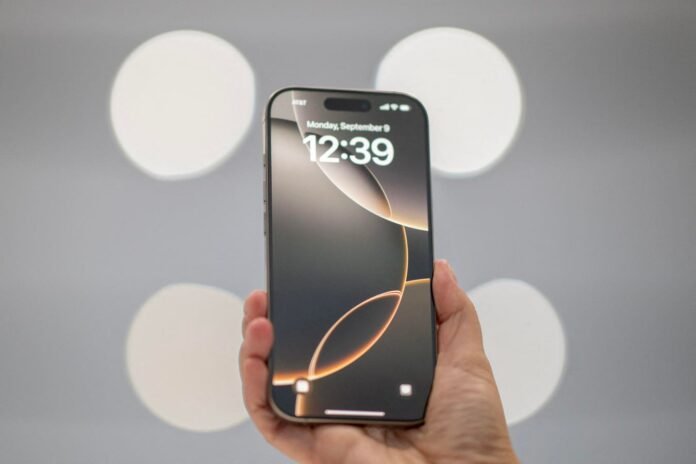Updated on October 27 with further reports on how the iPhone 17 Pro, iPhone 17 and iPhone 17 Air will be different.
Next September, the iPhone will look noticeably different, if a new report is right. The iPhone 17 Pro Max is predicted to have a smaller screen cutout called the Dynamic Island. And a new report now claims that Apple is considering changing the technology used in the iPhone’s display to match that of the Apple Watch. And it’s possible that both the iPhone 17 Pro and the iPhone 17 will have the same size display.
Apple iPhone 16 Pro Max – will the Dynamic Island shrink on the iPhone 17 Pro Max?
This is a change from the current situation where the iPhone 16 display measures 6.1 inches, while the Pro display is 6.3 inches. Reports suggest that the iPhone 17’s screen will be larger, comparable to the Pro at 6.3 inches. And that’s not the only change.
Although the iPhone 16 series includes a larger version of the regular iPhone, the iPhone 16 Plus, a Plus is not expected in the iPhone 17 series. Instead, an all-new model, the iPhone 17 Air, is believed to be on the way. And in terms of screen size, the iPhone 17 Air is said to have a screen size unlike any previous iPhone has ever seen: 6.6 inches.
This means the iPhone 17 range’s design will see a striking new look, with two phones featuring the 6.3-inch screen currently only found on the iPhone 16 Pro, while the largest screen measures 6.9 inches , just like now on the iPhone 16 Pro Max. and one that sits perfectly in the middle at 6.6 inches.
What’s less clear is what the Dynamic Island will look like on each phone, as we’ll discuss below.
Back to the iPhone 17 Pro display and how its design will change to match the Apple Watch. The report from Korean website The Elec says that after changing the nature of the display on the watch in the latest version, Apple Watch Series 10, a similar change is being considered and “will also be applied to the iPhone in the future. ”
The latest Watch uses LTPO3, which is different from the type of LTPO used on previous watches. “Apple announced on its website that the organic light-emitting diode (OLED) LTPO TFT technology applied to the Apple Watch 10 Series is LTPO3,” the report said in a machine-translated version.
So just as Apple took the LTPO OLED display from the Apple Watch Series 4 and applied it to the iPhone 13 three years later, the company was able to make the same change for the iPhone.
It’s not certain that this will be in time for the iPhone 17 Pro Max, but it’s not impossible. While it took three years for Watch technology to transition from smartwatch to iPhone, keep in mind that Apple has applied this to the entire iPhone range. It’s entirely possible that the new technology will appear on the Pro iPhone first, perhaps as early as 2025. We’ll see.
As for the new design, that’s according to analyst Jeff Pu, as reported by Joe Rossignol of MacRumors. The adoption of something called a metallics means Apple can reduce the part of the front of the screen taken up by the front camera and Face ID technology.
As you know, Dynamic Island is the term Apple uses for the way the screen around the cutout shrinks, grows and changes shape to add extra information to the home screen, for example showing album art when you play music. or flight information from the brilliant Flighty app while you wait to board a plane.
Interestingly, Pu says the change will only apply to the iPhone 17 Pro Max, and not the smaller iPhone 17 Pro. This seems surprising, but if correct, it will be a break with tradition.
While there were differences on the back of the iPhone, such as the camera capabilities, the Pro and Pro Max have always looked largely identical until now. Less surprising is the news that this change will not apply to the regular iPhone 17 models.
If you don’t know what a metal is, you’re not alone. MacRumor explains it this way: “While a traditional iPhone camera has curved lenses that direct light to the image sensor, a metal lens is a thin and flat lens with microscopic patterns etched onto it that can focus light more precisely. In his research note this month, Pu didn’t provide specific details on how Apple plans to use a metal for the Face ID system, nor did he explain how the change would result in a narrower Dynamic Island.
The new report builds on information provided by Pu earlier this year, suggesting that Apple’s plan has been consistent and continues to move in the same direction.
Pu has a strong reputation for accuracy, so while I still think the introduction of a design change for the Pro Max that leaves the Pro out in the cold surprises me, it’s a report worth checking out to take it seriously.





